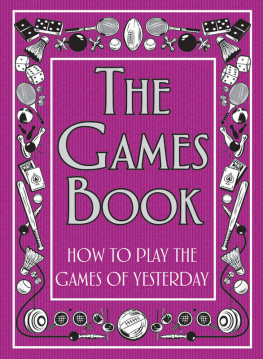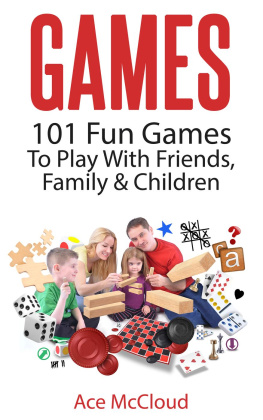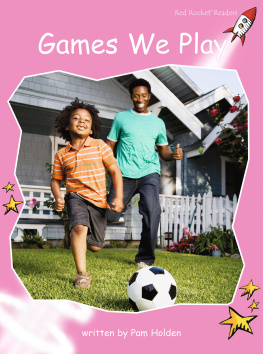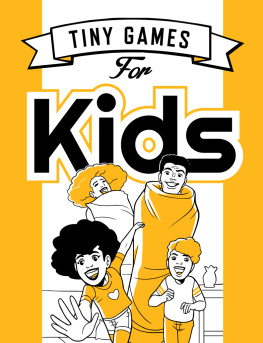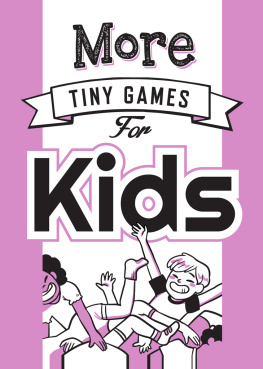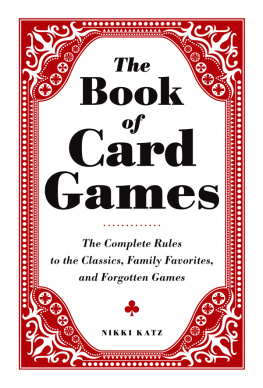CANINE SPORTS & GAMES
GREAT WAYS TO GET YOUR DOG FIT AND HAVE FUN TOGETHER!
Kristin Mehus-Roe

The mission of Storey Publishing is to serve our customers by publishing practical information that encourages personal independence in harmony with the environment.
Edited by Lisa H. Hiley and Deborah Burns
Art direction and book design by Jessica Armstrong
Illustrations by Kathryn Rathke
Indexed by Nancy D. Wood
2009 by Kristin Mehus-Roe
All rights reserved. No part of this book may be reproduced without written permission from the publisher, except by a reviewer who may quote brief passages or reproduce illustrations in a review with appropriate credits; nor may any part of this book be reproduced, stored in a retrieval system, or transmitted in any form or by any means electronic, mechanical, photocopying, recording, or other without written permission from the publisher.
The information in this book is true and complete to the best of our knowledge. All recommendations are made without guarantee on the part of the author or Storey Publishing. The author and publisher disclaim any liability in connection with the use of this information. For additional information, please contact Storey Publishing, 210 MASS MoCA Way, North Adams, MA 01247
Storey books are available for special premium and promotional uses and for customized editions. For further information, please call 1-800-793-9396.
Printed in the United States by Versa Press
10 9 8 7 6 5 4 3 2 1
Library of Congress Cataloging-in-Publication Data
Mehus-Roe, Kristin.
Canine sports & games / Kristin Mehus-Roe.
p. cm.
Includes index.
ISBN 978-1-60342-083-9 (pbk. : alk. paper)
I. Dog sports. 2. Games for dogs. I. Title.
II. Title: Canine sports and games.
SF424.M44 2009
636.7dc22
2008031839
Contents
FOR DESI
By the time I began writing this book, my Australian cattle dog, Desi, was long past her prime. Her days of doing agility and hiking had been over for several years and even swimming and walks around the block had become more than her arthritic knees could handle. Just short of her 16th birthday, Desi tumbled down a short set of stairs and broke her leg. At the emergency veterinarians office, I was told that she probably had bone cancer. The only treatment options were amputation or major surgery involving bone grafting; neither was viable for a dog of her age and health status. So I made the difficult decision to have her put to sleep.
When I left her on the floor of the vets office, she looked like she was sleeping her deep, heavy, old-dog sleep, which was nothing like the way she had slept for her first 12 or 13 years of life. Then, her sleep was light and almost jumpy; she was always ready to spring awake to protect the house or to pester me for a walk or run. During her life, Desi must have run a thousand miles, swum a hundred more, and hiked dozens of hills. She did agility, experimented with herding, and was a world-class dock jumper before dock jumping became a sport.
Desi was the inspiration for much, if not all, of my dog writing, including shelter stories, pet-care articles, and my first book, Working Dogs. Desi probably would have been happier living on a ranch than in our urban home, but she was game to try anything I presented her with and always made me proud. This book first began bubbling in my mind as I watched her run laps around the many other dogs she encountered on our walks, runs, hikes, and swims. She was game to try new sports into her teens (although she never did learn to catch a Frisbee despite hours and hours of attempts shed always stand stock still, staring the Frisbee down until it smacked her in the face). Id always wanted to write a book about canine sports for Desi, for all the miraculous experiences she gave me and for what she taught me about the world of dogs. So this book is for her, and for all the other athletic, smart, courageous dogs out there.
WHY DO DOG SPORTS?
People come to dog sports for many reasons. Most are just looking for something fun to do with their dogs, but many turn to dog sports as a last resort when dealing with behavioral issues.
One hundred years ago, most dogs were doing the jobs that they were bred for. Herding dogs herded, guard dogs guarded, and hunting dogs hunted. These dogs spent their days hard at work and their nights curled up in the barn or on the porch, exhausted. Family dogs routinely ran free leashes were uncommon and crates were unheard of. At most, a dog might be kept in a fenced yard or tied up outside of the house, but generally they ran loose in the streets, fighting and playing with other dogs, visiting neighbors, and getting into mischief. Most slept in doghouses and ate table scraps for dinner. Routine veterinary care was unusual; dogs saw a vet only in the case of a catastrophic injury or when close to death. Strays were ignored or rounded up and put to death.
Today, life has changed dramatically for American dogs. Its no longer acceptable for dogs to roam loose, and the number of dogs euthanized each year has dropped dramatically. There are hundreds of commercial dog foods and nutritional supplements available, consumers spend billions of dollars on pet care, and most dogs sleep inside the family home, if not in a family bed.
Rather than being working partners, dogs are now considered members of the family. But for all the emotional investment that people have in their pets, there is often something missing in many of these dogs lives: the chance to run and jump and play and work as they were bred to do.
The simple fact is that dogs who were developed to do intense work are not equipped to hang out in the house while their people work for eight hours a day, five days a week. They become bored and frustrated, often causing damage to themselves or to their owners property. Some dogs develop separation anxiety, while others can neither relax nor focus. They roam from room to room whining and crying, looking for an outlet for their pent-up energy.
Taking up a dog sport isnt the cure-all for dog behavior issues, but its certainly a good place to start particularly when you are dealing with a young dog of an energetic breed. Strongly motivated herding breeds, high-energy pit bull types, and driven Labs are prime candidates for landing in animal shelters. Full of vim and vigor, they can become stir-crazy without structured exercise and training.
Theres little doubt that doing canine sports can help almost any dog to become more balanced, better behaved, and happier. Most dogs benefit from having an outlet for their energy and intelligence, from the discipline required for training for a sport, and from the confidence that comes with success. An added bonus is that your high-energy pooch will sleep all night.
But the best and most common reason to become involved in dog sports is that its simply a lot of fun. The dogs love it, the people love it, and you will never feel quite so fulfilled as a dog owner as when you see your dogs open mouth and sparkling eyes as he tears through a tunnel or leaps off of a dock into the water.
You just cant beat the feeling of your dogs adoring eyes meeting yours as you teach him a new trick. Just as canine unit police officers often comment that their police dogs are the best partners they ever had, being part of a dog-handler team will help you to appreciate your four-legged friend like never before. Your bond will become immeasurably stronger as you work together, train together, travel together, and play together.


